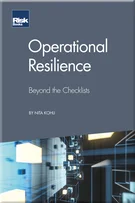Beyond CECL: rethinking bank transformation
Christopher Stanley
Introduction
An overview of CECL: setting the context
Outlining the most impactful assumptions and challenges under CECL: an auditor’s view
Outlining the most impactful assumptions and challenges under CECL: a banker’s view
A banking industry perspective on key CECL decisions
Challenges and solutions for wholesale portfolios
Challenges and solutions for retail mortgage portfolios
Challenges and solutions for retail credit card portfolios
Challenges and solutions for student loans
Challenges and solutions for securities portfolios
The evolution of purchased loan accounting: from FAS 91 to the CECL transition
Challenges and solutions for qualitative allowance
Challenges and solutions: an auditor’s point of view
Early view of CECL integration into stress testing: practical approaches
Too many cooks in the kitchen: mastering the art of managing CECL volatility
Beyond CECL: rethinking bank transformation
Data collision: efficient lending under CECL
Cutting through the hype: how CECL is impacting investor views of procyclicality, credit analysis and M&A
Concentration risk: the CECL magnifying glass
Closing thoughts
Traditional banking faces multiple headwinds, but two are prominent in executives’ attention: disruption from financial technology (fintech) start-ups; and increased credit costs following transition to current expected credit loss (CECL) reserve methodologies. Following successful CECL implementations, credit executives are well-positioned to influence a strategic response. Focused investment in existing credit capabilities keeps banks competitive. Leveraging CECL tools also maximises return on a compliance investment, and delivers a significantly more cost-effective transformation than the organisational rebuild that is more commonly envisioned.
The transition to the CECL reserve model refocused industry participants on the cost of credit. Pre-adoption estimates indicated a significantly higher carrying cost for most asset classes, with a material impact to longer duration receivables such as mortgage and credit card loans. Regulation, secondary market expectations and competition limit banks’ ability to pass these costs on to borrowers. From this position, prospective competitiveness depends on effective management of other components of banks’ cost structure. Efficiency
Copyright Infopro Digital Limited. All rights reserved.
As outlined in our terms and conditions, https://www.infopro-digital.com/terms-and-conditions/subscriptions/ (point 2.4), printing is limited to a single copy.
If you would like to purchase additional rights please email info@risk.net
Copyright Infopro Digital Limited. All rights reserved.
You may share this content using our article tools. As outlined in our terms and conditions, https://www.infopro-digital.com/terms-and-conditions/subscriptions/ (clause 2.4), an Authorised User may only make one copy of the materials for their own personal use. You must also comply with the restrictions in clause 2.5.
If you would like to purchase additional rights please email info@risk.net










